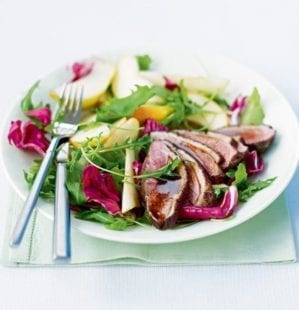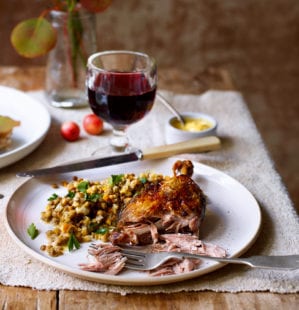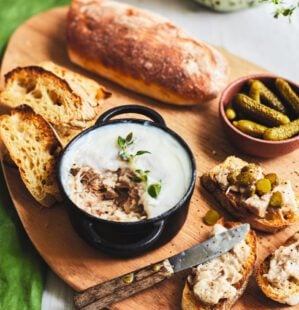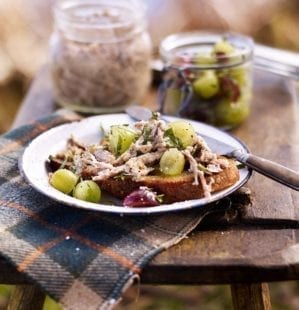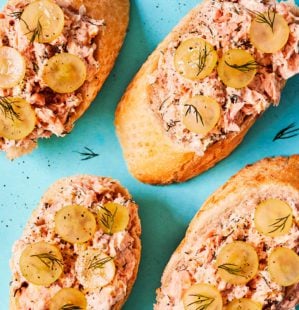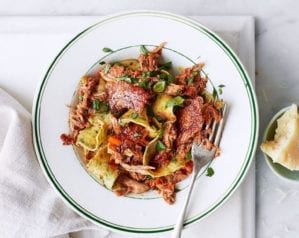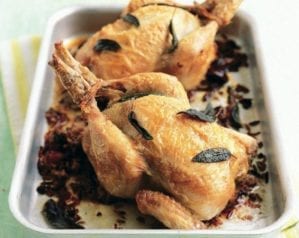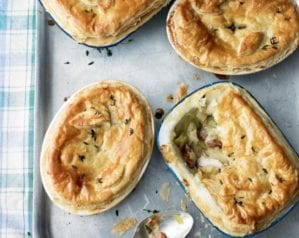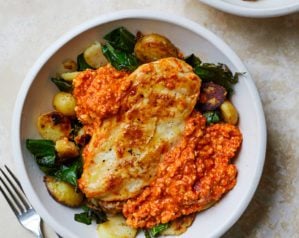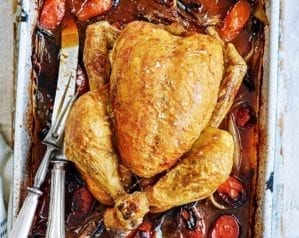
Duck rillettes
- Published: 3 Oct 16
- Updated: 2 May 24
Easier to make than you might think, Allan Pickett’s confit-cooked duck rillettes make a wonderfully rich lunch or sharing starter.
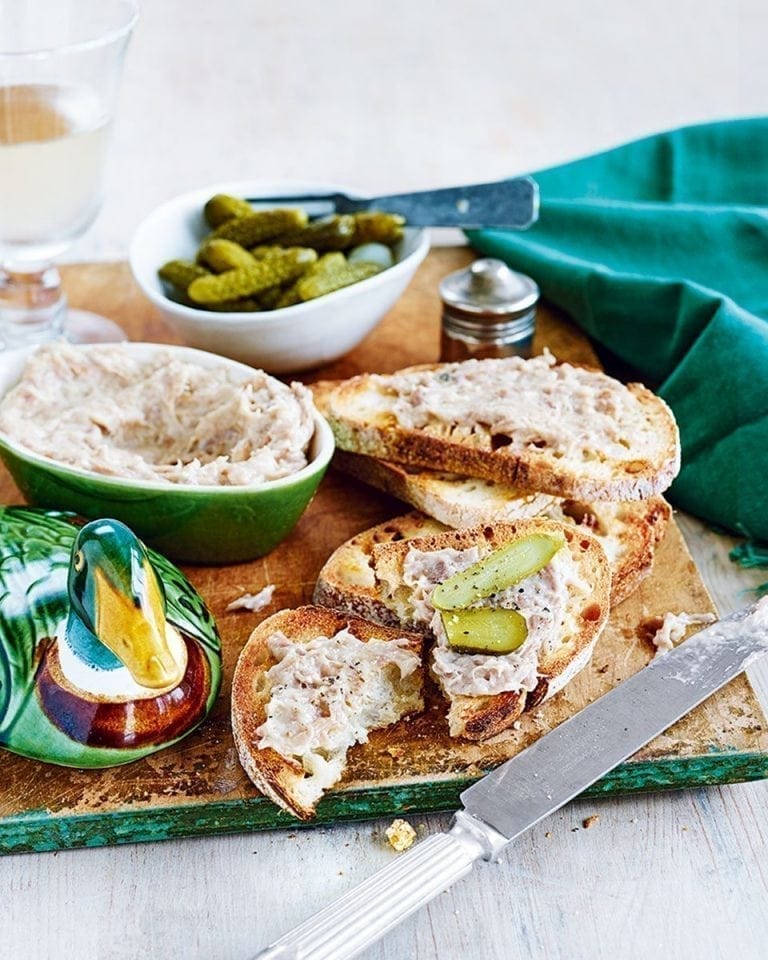
-
Serves 6-8
-
Hands-on time 35 min, oven time 4 hours, plus 12 hours salting
Before you start
You’ll need to begin this recipe the day before you want it, because the salting mixture needs to go in the fridge for at least 12 hours.
Ingredients
- 4 high-welfare duck legs
- 500g duck fat (plus a little extra if needed)
- 100ml dry white wine
For the salting mixture
- 60g rock salt
- 2 garlic cloves, finely chopped
- A few fresh thyme sprigs, leaves picked and finely chopped
- A few rosemary sprigs, leaves picked and finely chopped
To serve
- Cornichons, pickled onions and toasted sourdough
Method
- To make the salting mixture, thoroughly mix the salt, garlic and herbs in a small bowl, crushing it together lightly. Lay the duck legs in a single layer in a baking tray, sprinkle with half the salting mixture, press it in, then turn over and sprinkle with the rest. Cover the tray, then put in the fridge for at least 12 hours.
- The next day, rinse the legs in cold water to remove the salt mix and dry well with kitchen paper. Heat the oven to 130°C/110°C fan/gas ¾. Heat the duck fat and white wine in a large pan until steaming. Put the duck legs in a small roasting tin (or lidded casserole) and cover with the hot fat and wine mixture – the legs should be completely covered. If there’s a lot of duck poking out, add more melted fat or wine. Cover the duck in the tin/casserole with a sheet of non-stick baking paper, then cover the tin with foil and scrunch to seal (or put the lid on the casserole). Cook for 3-4 hours, checking halfway through to make sure the legs are covered by the fat. If any of the legs are above the fat level, turn them over. The legs are ready when the meat falls off the bone when pressed with a spoon. Remove the duck from the fat with tongs. Once the fat has cooled slightly, pour it into a jug.
- Leave the duck legs to cool, then pick off the meat (discard the skin and bones) and shred finely into a bowl. Pour some of the reserved fat onto the duck, then work it in with your hands. At first it will seem like the meat won’t accept the fat, but if you keep going, it will begin to soak in. Keep adding the fat in smallish additions until the mix in the bowl is roughly 50-50 fat to meat (or more, depending on how rich you want it). Any leftover fat can be stored for future use.
- Once the consistency is right, spoon into serving dishes (right) and chill. If storing for longer than 48 hours, cover with a thin layer of duck fat to seal.
- Remove from the fridge about an hour before you want to serve the rillettes, to take the chill off. Serve with pickles and toasted sourdough.
- Recipe from August 2016 Issue
Nutrition
For 8
- Calories
- 505kcals
- Fat
- 50.8g (14.5g saturated)
- Protein
- 9.9g
- Carbohydrates
- 0.1g (0.1g sugars)
- Fibre
- no fibre
- Salt
- 1.4g
delicious. tips
Depending on how big your tin/casserole is, you may need extra duck fat. You can re-use it afterwards: pour it into a jug and leave it to separate – the fat will rise to the top, and any juices will sink to the bottom. Gently pour off the fat, put in a clean jar and store in the fridge for more rillettes, confit duck or roast potatoes. It will keep for months, if sealed properly.
It’s better to overcook the meat so it’s falling off the bone, rather than undercooking it.
To speed up the absorption of the duck fat, sit the bowl over ice when mixing the fat into the cooked duck.
Pour some fat over the top of the rillettes to cover and seal. If you do that it will keep in the fridge for up to 10 days.
Buy ingredients online
Rate & review
Rate
Reviews
Subscribe to our magazine
Food stories, skills and tested recipes, straight to your door... Enjoy 5 issues for just £5 with our special introductory offer.
Subscribe
Unleash your inner chef
Looking for inspiration? Receive the latest recipes with our newsletter


